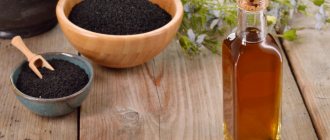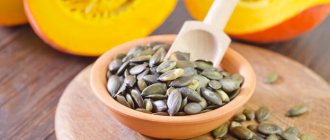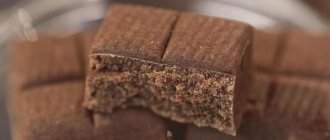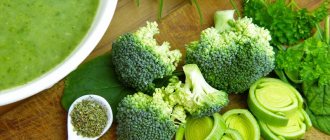What is black cumin, its description
Black cumin is a variety of cumin from the plant family Ranunculaceae, an annual subspecies. The unique healing and taste properties of the plant have been used all over the world for thousands of years. Therefore, black cumin has different names: in Russian-speaking countries it is nigella, in the European part it is called cumin, in Asian territories it is called nigella, coriand, seidana and others.
Black cumin cannot be confused with ordinary cumin, which is no less beneficial for health. They differ in appearance, taste and smell. The height of the stem of black cumin is straight and reaches 40 cm. With small leaves up to 3 cm long. Black cumin flowers can be white, blue and dark blue, with oblong leaves, cup-shaped. The fruits, that is, the seeds of black cumin themselves, are directly black in color and are formed in inflorescences. The plant blooms and ripens in August.
black cumin bush
The homeland of common caraway is the southern steppe territories along the coast of the Black and Caspian Seas. The plant spread to all other territories as a result of trade activities between countries. Growing on lands that differ in climate and natural conditions over many centuries, common cumin has evolved into several subspecies, one of which is black cumin. Black cumin was formed and is more widespread in nature in Asia and Northern latitudes.
black cumin inflorescence
Appearance
Common cumin - in Latin carum carvi - belongs to the Umbelliferae family. Externally, caraway greens resemble carrots; this group also includes dill, parsley and the weed weed familiar to gardeners. Smooth dark green stems up to 40-80 cm high branch at the top, forming a fluffy crown. The deeply dissected, feathery leaves open at the time of flowering. The cylindrical root is thick and fleshy, light in color.
Interesting. In English (caraway), this name has Arabic roots.
Graceful two-seeded fruits appear in place of small flowers, collected in white and pink inflorescences, by mid-summer. Their color is gray-brown, sometimes with a greenish tint. Each half of such a fruit - a narrow crescent with five yellow ribs - is a spice familiar to everyone.
Benefits of black cumin oil and seeds
Black cumin seed and oil is a truly healing herbal product, the beneficial effects of which are felt even by a healthy body, in addition, it serves as a preventive measure for many ailments and cures many diseases. Even Hippocrates and Dioscorides described the unique properties of black cumin and its healing effect in their works. In Arab countries, black cumin seed has been eaten twice a day on an ongoing basis for many centuries and is still consumed today.
Why is black cumin useful for us:
- actively stimulates the immune system like rose hips and ginger, increases physical activity.
- improves digestion by activating the secretion of enzymes in the stomach, helps reduce cramps and bloating, eliminates bad breath
- helps improve and prevent reproductive function in both men and women. Used to treat infertility and improve lactation. Regulates the endocrine system. Improves overall hormonal levels.
stimulates testosterone production
black cumin is good for potency
- reduces blood pressure by dilating blood vessels. increases hemoglobin.
- helps improve vision
- relieves nervous tension, is a natural antidepressant
- improves the condition of skin, hair and nails. Cumin oil copes with skin diseases such as acne and age spots. Treats alopecia and fights dandruff. Prevents hair loss.
black cumin improves hair condition
- For infectious and colds, using black cumin can relieve pain in the throat and ears. Helps with nasal congestion. Treats cough and chronic bronchitis. Useful for asthmatics.
- promotes the formation of bone marrow, which has an anti-cancer effect on the body.
- Relieves puffiness
- Has anti-opium effects
- Black cumin is the medicine of eternal youth.
black cumin supports strong immunity.
The following diseases are treated with the help of the medicinal effect of black cumin seeds:
- diabetes
- asthma
- Gastrointestinal diseases
- Diseases of the cardiovascular system
- Oncological diseases.
- Addiction
When to land?
When to plant seeds for seedlings? Experts recommend first assessing climatic conditions and soil moisture levels. Direct sowing of seeds is carried out in mid-April. During this period, the air will warm up to 15-20 degrees, and the humidity will be 30-40 percent.
Professional gardeners recommend pre-growing seedlings in closed ground and plastic containers. In this case, it is necessary to follow the cumin sowing pattern. It is recommended to sow up to 5 seeds per square centimeter.
In this case, it is possible to obtain good planting material, which will later be planted in open ground. A closed root system will allow the plant to quickly adapt to a new location.
How to care after sowing? The area where the seeds are planted must be moistened regularly. When the first shoots appear, it is important to monitor the presence of weeds, which reduce the growth rate of young caraway seeds. In addition, tall weeds reduce the amount of solar insolation.
Transplantation of seedlings is carried out when the plant reaches a size of 5-10 cm in length. In order for anise to quickly take root in a new place, you must be careful when in contact with its root system.
Harm and contraindications of black cumin
When consuming black cumin seeds and oil, the possibility of its negative effects should also be taken into account.
The herbal remedy and its derivatives are contraindicated for use in the following cases:
- In case of individual intolerance to components and allergic reactions
- For acute forms of gastrointestinal disease, high acidity, stomach ulcers and gastritis.
- People with coronary heart disease and thrombosis
- Pregnant women, as cumin stimulates uterine contractions
- Children under three years of age
black cumin is contraindicated in acute stomach diseases.
Excessive consumption of black cumin may cause:
- Diarrhea
- Allergic reactions in the form of rashes
When starting to regularly consume black cumin oil or seed, it is recommended to carefully monitor your body’s reaction to the action of the components of the herbal product.
Pharmacological properties
Caraway seeds are valuable medicinal raw materials. Many official medicine recognizes the following properties of caraway seeds:
- choleretic;
- antispasmodic;
- anthelmintic;
- antiseptic;
- carminative;
- sedative;
- laxative;
- calming.
Cumin has a property that increases the motor and secretory functions of the stomach
How to use black cumin correctly
Recipes for eating black cumin seeds.
When black cumin is consumed, both in crushed seed form and in the form of oil, the whole complex of its inherent positive effects appears on the body. The only difference is in the methods of use, which are outlined below.
- One of the simplest and most common recipes: mix one teaspoon of ground cumin seeds with one spoon of honey or two spoons, to your taste. The resulting pulp should be consumed twice a day before meals. In case of existing disorders, diseases of the gastrointestinal tract, except for those for which the use of cumin is prohibited, this consistency is recommended to be consumed only after meals, daily. Otherwise, cumin oils will burn your stomach.
black cumin with honey
- You can eat ground cumin seeds without honey. To activate the beneficial properties of the plant, it is enough to chew one teaspoon of ground or whole seeds in the mouth after eating. It is necessary to chew until the mouth cavity is filled with saliva. During this process, the powder or seed is mixed with saliva and the beneficial enzymes in the product are activated. Next, the consistency must be swallowed. Thus, cumin will be quickly and easily absorbed in the stomach. In addition, during chewing in the oral mucosa, black cumin releases many beneficial enzymes.
- You can brew black mina powder in regular boiling water, at the rate of 1 teaspoon of ground seed per 300 milliliters of liter of boiling water. After steeping the mixture for 15 to 30 minutes, you can drink it. This infusion should be consumed approximately half an hour before meals. This tea improves hormonal levels and improves immunity.
- Black cumin oil can also be consumed in the form of a simple mixture, one mug of warm boiled water (250-300 ml) and one spoon of oil. After mixing thoroughly, it is recommended to consume the solution half an hour before meals. The drink is immunomodulatory, choleretic and saturates the blood.
black cumin oil
This dietary supplement maintains a consistently high immune system, enhances potency, improves activation of hormonal levels, significantly increases vigor, promotes good sleep and mood. In Arab countries, in the indicated quantities, ground cumin seeds are consumed throughout life, from childhood.
Harvesting
When to collect seeds? At the end of the flowering period, seed pods form at the ends of the umbrellas. At this point, the inflorescences become yellow. This period falls at the end of July and mid-August.
Cumin umbrellas are carefully cut off for further drying. They are placed in a dark place. The seeds must ripen within 5 days. After the plant residues have dried, it will be much easier to extract planting material from them.
A small amount of dry elements is placed between the palms and rubbed with gentle movements to separate the aromatic particles. You can get rid of debris using the wind. The fact is that seeds are much heavier than dry twigs. They will fall to the bottom of the container.
How to choose black cumin oil
Not every black seed oil is of high quality and effective. The presence of additional flavoring and other additives may change its effect and reduce the effectiveness of the product.
High-quality cumin oil must meet the following requirements:
- Should not contain third-party additives. Manufacturers often dilute the composition with peanut and other oils to improve the taste.
- The oil must be pressed. This should be marked on the oil bottle.
- When consumed in its pure form, high-quality black cumin oil should create a burning effect. This indicates its purity and quality.
It is extremely difficult to purchase pure cumin oil in pharmacies. This oil is practically never available in pharmacies, with rare exceptions.
Various applications
Cooking is the main area of use of cumin. It is part of the curry mixture and is used for spicy salting of fish, sauerkraut, canning cucumbers and tomatoes. By the persistent pungent smell we recognize dark rye bread: Riga or Borodino. Many dishes with cumin are easy to prepare but very tasty. Dried seeds are added to food shortly before cooking. It’s easy to buy a packet of seasoning at a store or market for a small price. Several oblong grains will give meat or baked goods a characteristic spicy bitterness.
In perfumery, the alcoholic beverage industry, and when making soap, fragrant essential oils are used. They are expelled from plant materials using water vapor. The remaining fats are pressed for pharmacological and technical purposes. Cumin not only provides benefits in the home kitchen but also has agricultural significance. White umbrellas of flowers are excellent honey plants. Approximately 100 kg of honey is obtained from one hectare of crops. The cake remaining after seed processing is used to feed cows and horses.
How to store cumin
Black and common caraway seeds are easy to store. For long-term storage, a glass, ceramic or plastic container with a tight-fitting lid is sufficient. Should be stored in a dry place. Cumin does not require special temperature conditions for storage. It is advisable to limit the shelf life to 12 months. Next, the seeds will begin to rot and suffocate.
Black cumin oil is stored even longer and reaches 18 months. Requires the same dry conditions, at room temperature in an airtight glass or ceramic container.
Black cumin is a plant of eternal youth. A unique herbal product that contains thousands of useful enzymes and is simply necessary for daily use, on an ongoing basis, by every person.
Share this post
Chemical composition of the plant
The composition of the fruits of caraway seeds includes:
- fixed oils;
- essential oils;
- flavonoids;
- coumarins;
- tannins;
- proteins.
The chemical content of an essential oil varies depending on the stage of plant development. The basis of the essential oil is the terpenoid carvone - up to 60%. Another 30% comes from D-limonene, a hydrocarbon of the terpene group.
The residues are distributed among organic alcohols, flavonoids, and carbohydrates. The substance carvacrol is responsible for the characteristic aroma.
For what diseases is the product indicated for children? Can it be used on newborns?
In a family with a baby, cumin seeds can replace many medications. If you prepare a special decoction, you can use it to do enemas for bloating, colic or constipation. The following tricky recipe will help you cope with otitis in a child: cut out a cube in the upper part of the onion head, make a hole with a knife, pour a teaspoon of seeds into it, and cover with the cut out part of the onion. Such an onion is baked, and while it is still hot, the juice is squeezed out. A few drops are instilled into the ear and covered with cotton wool. This should be done twice a day.
Also recommended: Sesame seed
Let us remind you that any experiments with your health, and even more so with the health of a small child, using folk remedies should only be carried out with the permission of a specialist who will tell you whether there are contraindications and advise on the optimal dosage specifically for your baby.











